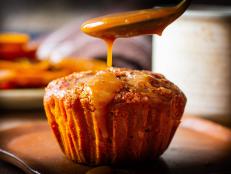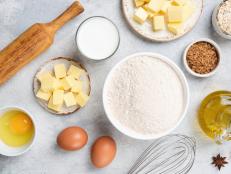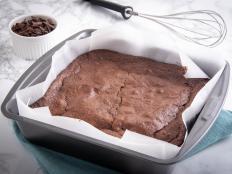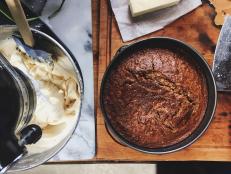What Is Xanthan Gum?
You’ve seen it in gluten-free baking recipes, and maybe the back of an ice cream carton.

Marika Kosheleva/Getty Images
By Jessie Sheehan for Food Network Kitchen
Jessie Sheehan is a baker and cookbook author.
Xanthan gum is an ingredient that you have probably seen listed in a gluten-free baking recipe or two. You might not have been quite sure how to pronounce it, or what it was doing in your recipe. Well, thank goodness for us, because we are here with the what, why and how of everybody’s favorite baking gum. And to set the record straight, it’s pronounced “zan-th-n.”
Many folks cannot tolerate gluten (a wheat protein), and thus xanthan gum is a bit of a lifesaver, as it takes the place and thus plays the role of gluten in recipes for which it is called. Gluten traps air bubbles giving bread stretch and rise; xanthan gum does the same thing. When it is combined with the liquid in your baking recipe, it turns sticky and said stickiness helps to bind the various ingredients together. And just like gluten, it traps the bubbles produced by the baking soda, powder or yeast in your recipe, providing your baked good with structure and body. Without xanthan gum in a gluten-free bread or cake recipe for instance, the dough or batter would be dry and crumbly and would not rise, despite the presence of a leavening agent. Xanthan gum is quite literally the glue (aka gum) that holds your gluten-free baked goods together while simultaneously lifting them up. For all of this we are just so darn grateful.

Peter Dazeley/Getty Image
What Is Xanthan Gum?
Xanthan gum, a fine powder that comes from the coating of xanthomonas campestris bacteria, is a gluten-free baking ingredient that mimics the effects of gluten by binding ingredients together and providing moisture and structure. Xanthan Gum adds thickness and viscosity to gluten-free breads and other baked goods. Without xanthan gum, your gluten-free baked goods would be dry, crumbly and flat. Because xanthan gum is gluten-free and vegan, it’s the preferred thickener for those home bakers with food allergies. It can be found in the baking aisle of many grocery stores.

Oscar Wong/Getty Images
How Do I Use Xanthan Gum When Gluten-Free Baking?
First, if you are assembling a recipe with a gluten-free flour blend, check the blend ingredients to make sure the list does not already include xanthan gum, as many of them do. If the blend does not call for it, or if you are using a recipe that calls only for almond flour, for instance, or attempting to convert a recipe calling for wheat flour, to a gluten-free one, a safe bet is about 1/4 to 1/2 teaspoon of xanthan gum per 1 cup of flour. You may need more for yeasted breads but figuring out the amount that works best is going to take some experimenting, and it is best the first time to start with a small amount and to increase the amount if necessary the next time.
Are There Other Uses for Xanthan Gum?
Xanthan gum can be uses to thicken savory sauces, to bind salad dressings, and to give nice mouthfeel to ice cream.
What Can I Substitute for Xanthan Gum?
Both flaxseeds and chia seeds can be substituted for xanthan gum. Like the gum, when mixed with a liquid, both seeds get sticky and gel-like, binding your ingredients together, as well as providing rise and structure to your baked goods. Although the substitution is 1 for 1, you want to mix the seeds with two to three times as much water to create an egg substitute (rather than adding the seeds right along with the dry ingredients, like you do when baking with xanthan gum).
Recipes with Xanthan Gum
Want to see xanthan gum in action? Check out some (or all!) of these recipes.

Tara Donne
These cookies are not gluten-free, but they are vegan and the xanthan gum in this recipe helps stabilize the tapioca flour in the recipe, which contributes to their chewy texture without any eggs or butter.

Tara Donne
These gluten-free cookies call for xanthan gum as it plays the role of gluten, adding thickness and viscosity to these tasty treats.

Tara Donne
Here, xanthan gum mimics the thickening qualities of eggs in this vegan cookie recipe.
Related Links:






























.jpg.rend.hgtvcom.231.174.suffix/1681323015319.jpeg)

